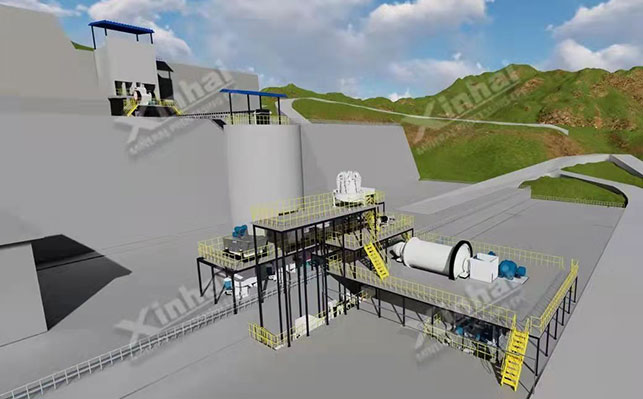Grinding and classification operations are crucial stages in the ore beneficiation process, and their processing capacity determines the overall output of the ore beneficiation plant. In recent years, with the application of the Grinding and Classification Automatic Control System in ore processing, many beneficiation plants have benefited, enhancing the production efficiency of equipment. Let's explore the technical challenges that this automatic control system has addressed.

Currently, there are significant challenges in the grinding and classification process that need urgent resolution: the classification of fine particles (-10μm) and the issue of over-grinding of brittle materials. Additionally, the application of automated control technology in grinding and classification is a vital research topic in the field of ore beneficiation and related disciplines. The use of automation can maximize the efficiency of grinding and classification operations, stabilize process indicators, reduce consumption, and allow ore beneficiation processes to unleash greater equipment potential, resulting in improved economic benefits.
Technical Challenges Addressed by the Grinding and Classification Automatic Control System:
The problem of over-grinding in tungsten ore is a common technological issue in tungsten beneficiation plants. Taking the Xianglushan tungsten mine as an example, the particle size distribution of -10 microns accounts for approximately 20%, the recovery rate of tungsten particles is about 30%, and the recovery rate of other particle sizes is around 80%. By reducing the particle size distribution of -10 microns to 10%, an increase of approximately 5% in the total recovery rate can be achieved, resulting in an economic benefit of around 40 million yuan per year for the Xianglushan tungsten mine.
To address the brittleness and easy mudification of tungsten ore, an upgrade and optimization of the tungsten ore grinding and classification equipment were implemented. This involved the use of a combined process of short-cone cyclones and high-frequency fine screens to resolve the over-grinding issue in the first-stage grinding of tungsten ore. It eliminated the problem of anti-enrichment during gravity classification, providing properly dissociated material with a reasonable particle size distribution for further separation, thereby increasing the recovery rate of tungsten.
The Yichun tantalum-niobium ore of China Minmetals Corporation is one of the largest tantalum-niobium selection enterprises and production bases for tantalum-niobium-lithium raw materials in China. However, it has been plagued by the inability to maintain stable production for an extended period. The main reasons are the variability in ore properties and the inability of manual operations to respond promptly to production instability, leading to poor stability of the beneficiation plant's process flow. This results in an unreliable guarantee and improvement of the original ore processing capacity and the final product's yield and quality.
After the successful commissioning and operation of the automated control system, the processing capacity of the rod mill increased by 22.53%, the operating rate of the rod mill increased by 7.90%, water consumption per ton of ore decreased by 12.41%, concentrate yield increased by 34.14%, and tailings grade decreased by 3.08%.
The Grinding and Classification Automation System utilizes automatic control to comprehensively analyze and judge factors such as the load on grinding equipment and ore feed properties. It achieves optimal control of ore feed quantity, grinding concentration, classification overflow concentration, and particle size. The automation system also provides automatic detection, display of parameters, and various fault alarms for grinding and classification operations, ensuring that the operations run smoothly.
(1) Advantages and Features
Automatic control of ball mill ore feed, with automatic detection and switching of the discharge port when blocked.
Automatic adjustment of grinding concentration, overcoming disturbances caused by water pressure fluctuations.
Automatic adjustment of cyclone ore feed concentration to ensure classification effectiveness.
Coordinated automatic adjustment of cyclone ore feed pressure and pump pool liquid level.
Automatic operation and real-time monitoring of the steel ball addition equipment with uniform ball ratio.
(2) Implementation Results
Achieving unmanned operation at workstations with patrol inspection as the main focus.
Stabilizing the production process, balancing operational capacity and efficiency.
Improving the processing capacity of the mill while ensuring grinding and classification indicators.
Providing various production reports and queries for optimized production scheduling.
The XinHai Grinding and Classification Automation System has been widely applied in projects undertaken by our company, assisting clients in achieving better beneficiation indicators and making plant operations more worry-free and efficient.